Libya History Facts and Timeline
(Libya, LY, North Africa)
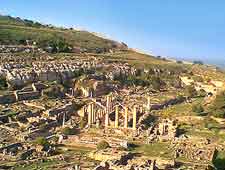
Sited on North Africa's sunny Mediterranean coast, Libya is one of the biggest of all the countries in Africa. Before the outbreak of civil war in 2011, the country had a fledgling tourist industry, with visitors keen on exploring its many historical sites.
With a renewed sense of stability and much for visitors to explore, there is no reason why this African country should not return to the tourist map once again in the near future.
Ancient Cultures
The history of Libya dates back to around 8,000 BC, when its coastal areas were inhabited by the ancient Berber peoples. Following the Berbers, Libya was ruled by many conquering empires, such as the Romans, the Greeks, the Persians, the Arabs and also the Turks. One of the best places to learn about Greek history in Libya is at Cyrene, an ancient city and now a UNESCO World Heritage Site. Another UNESCO site on this Mediterranean coast is Leptis Magna, a Roman ruin which was excavated in 1994. It is believed to be the largest Roman ruin in the entire country.
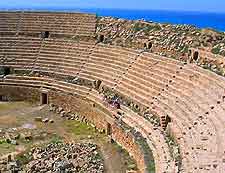
In the capital, Tripoli, there is only one remaining Roman monument, the Arch of Marcus Aurelius, but there is plenty of architecture dating back to the Turkish Ottoman Empire. The most famous piece is the Assaraya al-Hamra, a huge palace complex which overlooks the city.
By 647 AD, a large contingent of Arab warriors 'liberated' the region from waning Byzantium rule and Berber influence, converting the locals to Islam. It was later to come under Abbasid rule, before the rising Ottoman Empire arrived in the mid-16th century to restore order among Tripoli's 'city of pirates'. Their reign lasted until the Second Barbary War of 1815 was lost to British and American allied forces.
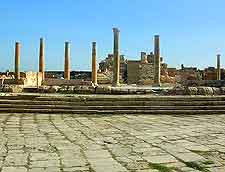
History of the Italian Colonial Era
Italy ruled Libya from 1912 until 1927 as 'Italian North Africa', when it administered two separate parts of the country, Tripolitania and Cyrenaica. More than 100,000 Italians were encouraged to move to Libya, making up one-fifth of the population. Italian rule was often barbaric, with half of the Bedouin population wiped out by the early 1930s.
Some of the finest architecture from this period can be found in the city of Ghat, home to the Fortress of Ghat. Building of this fortress began in the 19th century, although it was actually finished by the Italians in order to cement their control in this important trading post.
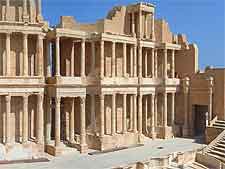
Despite a rebellion led by Sheikh Idris I against the Italians between the World Wars, it wasn't until the latter years of WWII that the British and French regained control of the territory. Idris returned from his Egyptian exile once Italy had relinquished all claim to Libyan territory in 1947, while the British remained in the former Italian colonies until the year of 1951.
A Time of Independence
Libya formally declared its independence in December 1951, when Idris became the first and only king. The following decade was one of the most stable times in the history of Libya - oil was unearthed in 1959, which led to large amounts of investment from Western countries such as the USA and the UK. However, there were concerns in some quarters about how this wealth was to be shared, leading to a rise in Arab nationalism and an eventual coup d'état.
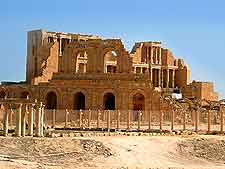
Muammar Gaddafi
In September 1969, Muammar Gaddafi led a coup and successfully removed King Idris I from power. The military regime that followed the Libyan revolution was to remain in power for more than 40 years.
Gaddafi became one of the world's most notorious dictators during this time, being known for arming paramilitary organisations around the world and becoming the sworn enemy of the USA. In fact, the US even tried to execute him in a 1986 air-raid, which was followed by his involvement in the bombing of a commercial airliner over Lockerbie (south-western Scotland) in 1988, as a retaliation of this act.
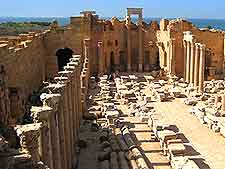
Gaddafi's people lived in fear of his secret police - executions of dissidents were commonplace. Much of Libya's oil money was spent on arms rather than infrastructure, and years of failed economic policies came home to roost in 2011, when a rebel uprising began in earnest.
With support from NATO airstrikes, rebel forces eventually overwhelmed government troops in what is now referred to as the Libyan Civil War. By August 2011, rebel soldiers had taken Green Square - renaming it Martyr's Square as a mark of respect to those who had given their lives in the conflict. Gaddafi was killed in Sirte city on 20th October 2011, just three days before the official Libyan liberation.
 Sited on North Africa's sunny Mediterranean coast, Libya is one of the biggest of all the countries in Africa. Before the outbreak of civil war in 2011, the country had a fledgling tourist industry, with visitors keen on exploring its many historical sites.
Sited on North Africa's sunny Mediterranean coast, Libya is one of the biggest of all the countries in Africa. Before the outbreak of civil war in 2011, the country had a fledgling tourist industry, with visitors keen on exploring its many historical sites. In the capital, Tripoli, there is only one remaining Roman monument, the Arch of Marcus Aurelius, but there is plenty of architecture dating back to the Turkish Ottoman Empire. The most famous piece is the Assaraya al-Hamra, a huge palace complex which overlooks the city.
In the capital, Tripoli, there is only one remaining Roman monument, the Arch of Marcus Aurelius, but there is plenty of architecture dating back to the Turkish Ottoman Empire. The most famous piece is the Assaraya al-Hamra, a huge palace complex which overlooks the city.
 Despite a rebellion led by Sheikh Idris I against the Italians between the World Wars, it wasn't until the latter years of WWII that the British and French regained control of the territory. Idris returned from his Egyptian exile once Italy had relinquished all claim to Libyan territory in 1947, while the British remained in the former Italian colonies until the year of 1951.
Despite a rebellion led by Sheikh Idris I against the Italians between the World Wars, it wasn't until the latter years of WWII that the British and French regained control of the territory. Idris returned from his Egyptian exile once Italy had relinquished all claim to Libyan territory in 1947, while the British remained in the former Italian colonies until the year of 1951.
 Gaddafi's people lived in fear of his secret police - executions of dissidents were commonplace. Much of Libya's oil money was spent on arms rather than infrastructure, and years of failed economic policies came home to roost in 2011, when a rebel uprising began in earnest.
Gaddafi's people lived in fear of his secret police - executions of dissidents were commonplace. Much of Libya's oil money was spent on arms rather than infrastructure, and years of failed economic policies came home to roost in 2011, when a rebel uprising began in earnest.